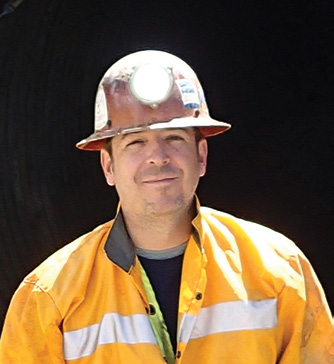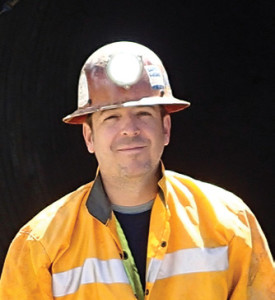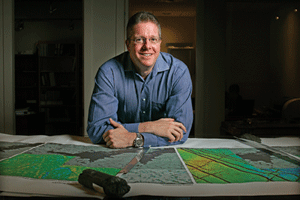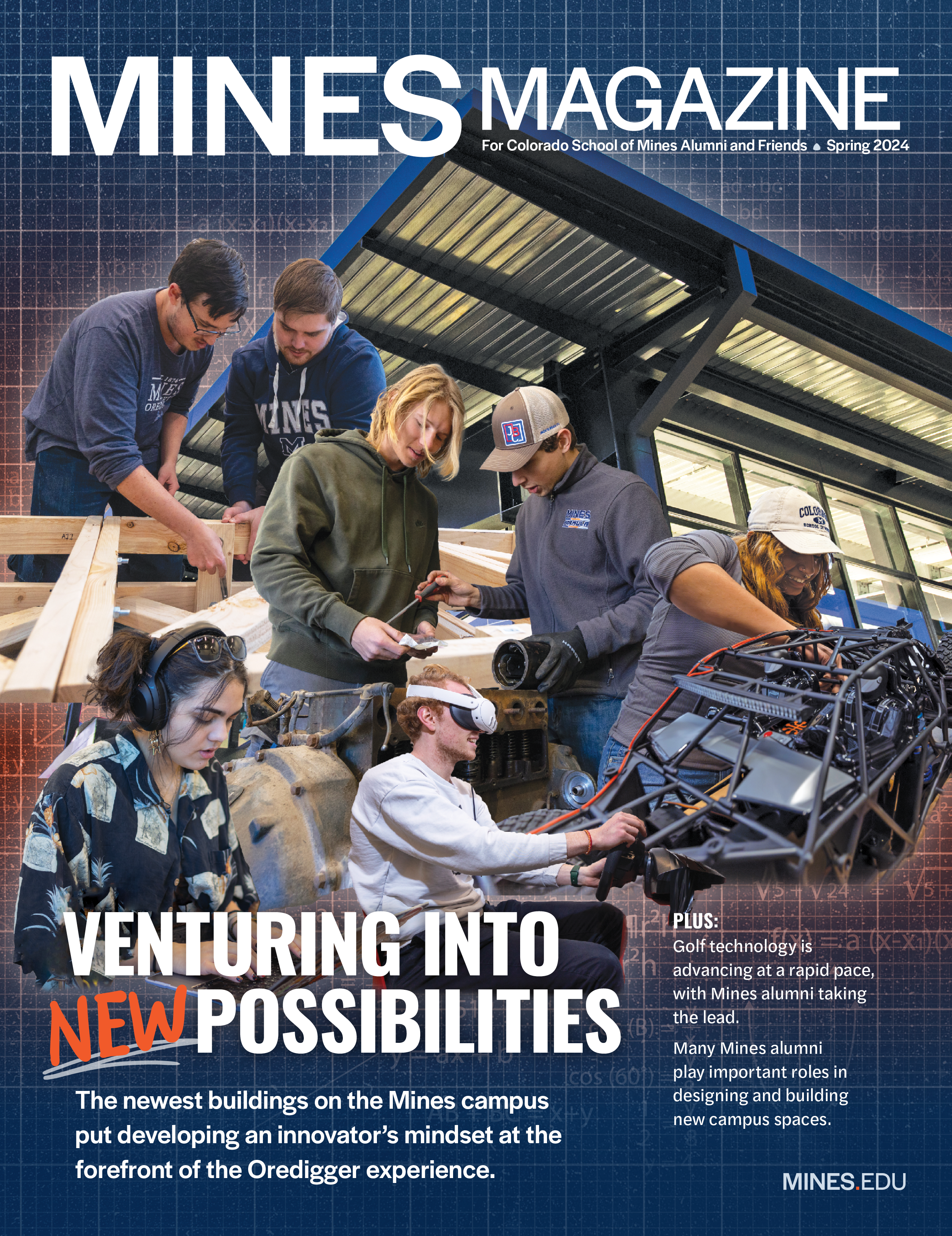Jeff Graves ’13 is a self-styled history buff who is fascinated by Colorado’s early mining industry—and by the colorful frontiersmen who, he says, achieved incredible feats of engineering in their hunt for gold and silver. But as a geological engineer, Graves is also grappling with another legacy of mining in Colorado: its environmental toll. Across the state, many old mines leach heavy metals like zinc and copper into nearby streams and rivers through a process called acid mine drainage.
Graves, a senior project manager in the Colorado Department of Natural Resource’s Division of Reclamation, Mining and Safety, is leading an effort to halt the flow of pollution from one such site: the Pennsylvania Mine. This now-defunct silver and gold operation, which dates back to the late 1870s, sits several miles east of Keystone, Colorado, on a waterway called Peru Creek. Graves hopes that the drive to clean up the site will demonstrate the state’s commitment to dealing with its mining past in a cost-effective manner.
Colorado’s earliest miners “never intended this to be a problem,” Graves says. “So once you get beyond asking who’s to blame, the question becomes, what are the solutions? What can we do inexpensively to address this problem?”
In the case of the Pennsylvania Mine, and many historical sites like it, the problem originates deep in the mine workings. Acid mine drainage, Graves explains, occurs when three ingredients—water, oxygen, and sulfur-bearing minerals—mix underground. That mixture causes a buildup
of groundwater that is loaded with heavy metals, which can then leak out to the surrounding countryside. Such drainage can pose health risks to both the people living nearby and to stream life.
Near the Pennsylvania Mine, the fallout is visible in Peru Creek. Here, there are “no fish, no bugs,” Graves says. “Peru Creek is pretty much dead from the Pennsylvania Mine to the Snake River.” And that’s a big problem for Summit County, Colorado, where the Snake River is an important outdoor recreation site and a source of drinking water supplies.
Graves, however, has built a career on figuring out how to shut down, or treat, that flow of polluted water from abandoned mines. “The first thing you have to figure out is, how is water moving through here? What’s the plumbing system like? It’s kind of a big puzzle that you’re trying to put together,” says Graves.
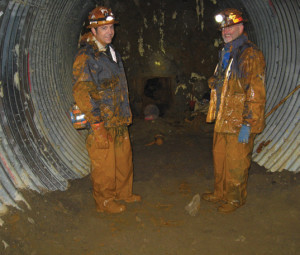
Jeff Graves ’13 and Al Amundson ’71 stand in the Pennsylvania Mine following an initial underground investigation. (Credit: Bruce Stover)
For a site like the Pennsylvania Mine, there are a handful of possible solutions to that puzzle. In some cases, such as near the massive Argo Tunnel in Idaho Springs, Colorado, reclamation experts have opted to install water treatment plants around mines. These plants clean the escaping water, making it safe for nearby creeks. But they’re also expensive and noisy to run.
In its current cleanup effort, which began in earnest in 2013, the Division of Reclamation, Mining and Safety opted for a more low-tech approach. Over a five-year period, Graves’ team—in partnership with the U.S. Environmental Protection Agency—will install a series of concrete bulkheads in the mine. These bulkheads should force water to back up within the site, curtailing the processes that lead to acid mine drainage. It’s a bit like putting a stopper in your bathtub. “You’re trying to return the water table to pre-mining conditions,” Graves says. His group has already placed two such plugs in the mine (each up to 20 feet thick), and they plan to install a third in 2016. So far, the project is below budget and ahead of schedule.
Graves, who earned his master’s degree in geological engineering, says that his time at Mines was marked by a strong focus on real-life problem solving. In one of the first classes he took, he and his fellow students were tasked with simulating what might happen if a mining drainage tunnel located in Leadville experienced a blowout. “The project was right up my alley,” he says. “It was fun to actually be able to use some of what I did in class here at work.”
But the history buff-turned-engineer says that there is more to mining reclamation than solving 100-year-old problems—it’s also about looking to the future. By studying historical operations like the Pennsylvania Mine and where they went wrong, Graves says that the mining industry has been able to develop new strategies for making today’s mines more environmentally sustainable.
“I think there’s a place for mining in Colorado still,” he says. “Seeing how things were in the past has definitely influenced how mining takes place in Colorado now. And I think that’s for the better.”

